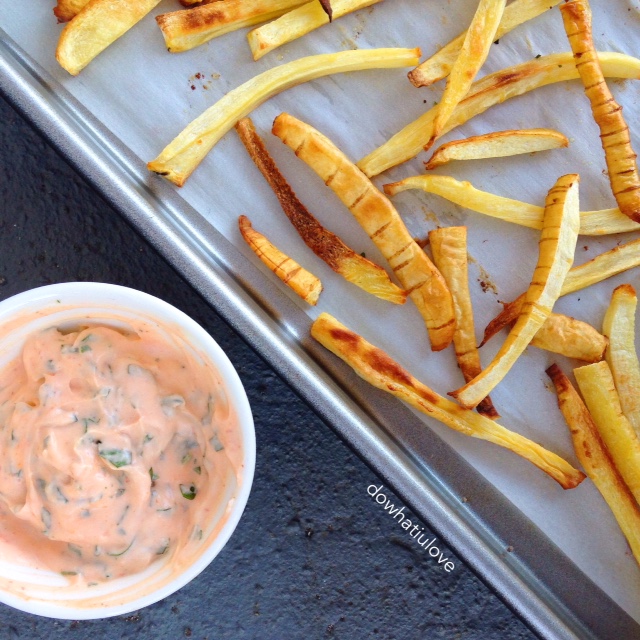Happy fri-day! (get it?!)
Today I want to share my fry obsession with you. I love anything crispy and crunchy, and these baked parsnip fries satisfy just that!
Why parsnips you ask?
Every vegetable contains different vitamins and nutrients. If you only eat the same vegetables every day, then you limit yourself from getting other essential vitamins and nutrients that your body needs to keep you healthy. Since it’s so important to switch up the vegetables you eat, I thought I’d share with you this new take on fries.
Why parsnips are good for you
Parsnips are one of the most underrated veggies. They are high in fiber, B vitamins, vitamin C, potassium and folate. In other words, eating parsnips can help regulate the digestive system, reduce the risk of certain cancers, and improve your immune system.
Unlike your conventional, pre-packaged/fast food chain fry, we're going to start with a whole potato, and cook these in simply canola oil, a heart healthy fat. Aside from a few seasonings, that's it! It is easy to make, healthy and addictively delicious. Seriously beware, these go fast, real fast. So if you plan on sharing, I suggest you double the recipe. And if you're all about the crispy fries kinda gal like myself, this will hit the spot.
BAKED PARSNIP FRIES with SRIRACHA MAYO
INGREDIENTS
2 medium parsnips
2 tsp olive oil
1/4 tsp salt
1/4 tsp freshly ground black pepper
Sauce:
1 tbsp low-fat mayonnaise
1 tbsp plain Greek yogurt (I used Fage 2%)
1 tsp Sriracha
1 tbsp fresh cilantro, minced
INSTRUCTIONS
1. Preheat oven to 400 degrees F and line 1 large baking sheet pan with parchment paper.
2. Wash the parsnips and pat dry with a paper towel. Cut the parsnips into matchsticks, about 1/2 in x 1/2 in.
3. Place the parsnips on the sheet pan. Drizzle with olive oil and add the salt and pepper, to taste. Gently toss the parsnips until they are evenly coated. Arrange them in a single layer. Bake for 40 minutes, flipping once halfway to ensure even cooking. If you’d like them crispier, keep them in the oven for a few minutes, but be sure to check on them so they don’t burn!
4. Meanwhile, prepare the Sriracha dipping sauce. In a small bowl, mix together low-fat mayonnaise, Greek yogurt and cilantro. Note: You can adjust the spiciness by adding more or less Sriracha.
5. When fries are ready, remove them from the oven and allow to cool for 5 minutes. Serve immediately with Sriracha mayo. Bon appétit!










